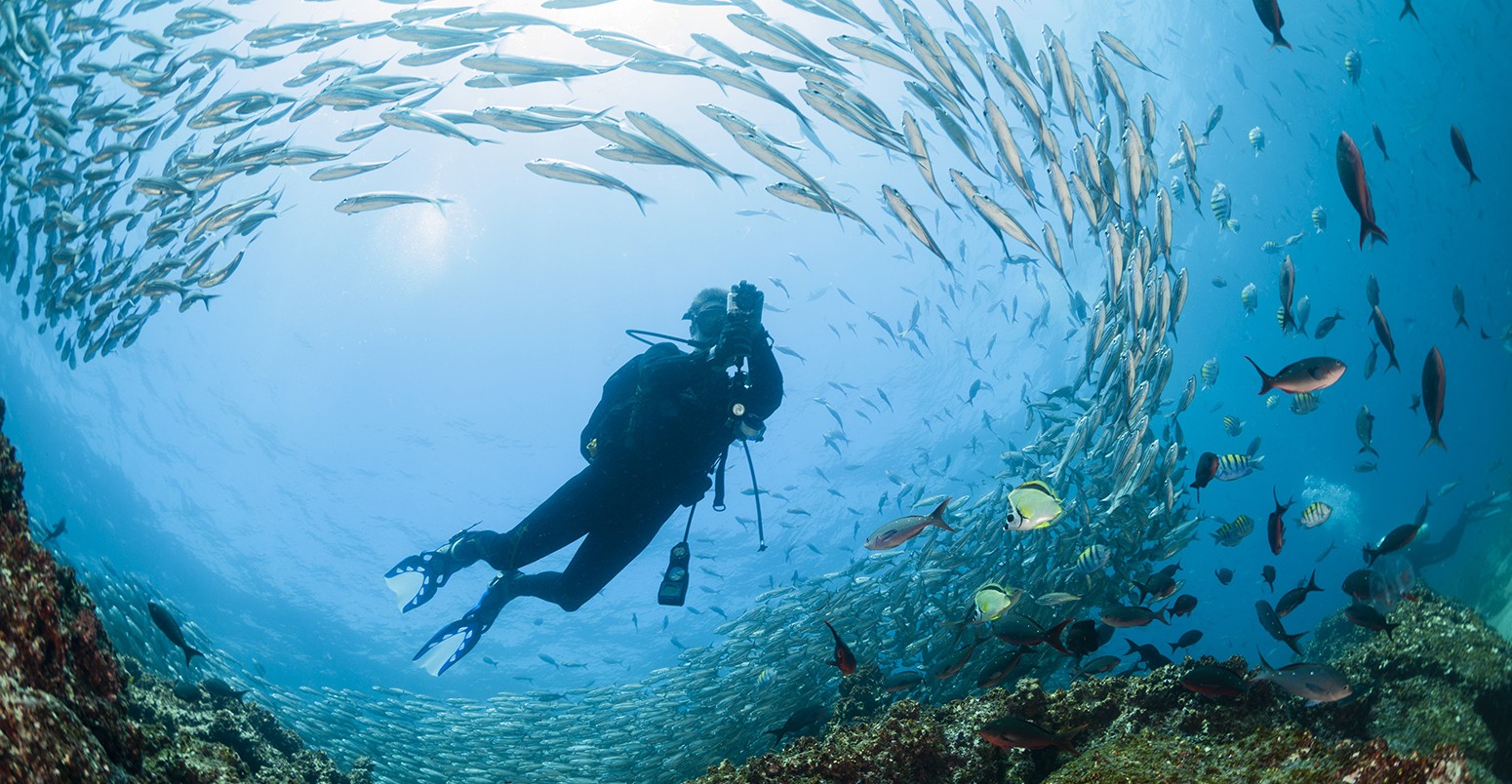
Map: Ocean warming could push marine species beyond their limits
Robert McSweeney
11.11.15Robert McSweeney
11.11.2015 | 6:00pmHow a warming ocean affects marine animals is about more than how high temperatures get. It also matters whether or not fish and other creatures can tolerate that change, a new study says.
The map below, published in a new paper in Nature, identifies which present-day habitats are likely to warm in excess of what shallow-water fish and invertebrates can cope with.
The study considers almost 4,000 different species in habitats around the world. The map colours indicate the proportion of existing species that are expected to be pushed beyond their limits by 2025 (upper map) and 2115 (lower map) under a high emissions scenario.
The dark blue shading illustrates where conditions will get too warm for only 10% of species. At the other end of the scale, regions with red shading are likely to exceed the tolerance of 100% of species. For the 2115 map, the red shading covers a third of all the regions analysed in the study.

Proportion of shallow-water fish and invertebrate species in present-day communities likely to exceed their thermal tolerance limit by a) 2025 and b) 2115, under the RCP8.5 emission scenario. Blue shading shows areas of little change, while orange and reds show large expected changes. Source: Stuart-Smith, et al. (2015)
Species in tropical regions are most at risk of exceeding their limits because they’re already swimming around in waters at the top of the range they can comfortably live in, the paper says.
So what happens when current habitats become uninhabitable? Lead author, Dr Rick Stuart-Smith from the University of Tasmania, says species will be lost to those locations. He explains to Carbon Brief:
The ‘lost’ species will most likely move, adapt or die, with the former the most likely for fishes in particular.
This is less a case of global extinction, says Stuart-Smith, and more a case of how ecosystems will change if their resident species decamp to cooler waters:
If I go and do a dive survey off Sydney tomorrow, how many of the species I see on that dive will be there in 10 or 100 years? That is what the paper is about.
But shallow-water species in other regions should fare remarkably well despite rising temperatures, he says:
The prime examples are south eastern Australia and western Mediterranean, which are rapidly warming areas, but will probably lose few of the species we currently see there.
These areas are more resilient to change because they’re dominated by species that will still thrive in warmer waters, Stuart-Smith says. In these regions, we should worry less about losing existing species and more about a potential influx of new species on the move from other unsuitable habitats, he adds.
Main image: School of Black Striped Salema. © Michele Westmorland/Corbis
Stuart-Smith, R.D. (2015) Thermal biases and vulnerability to warming in the world’s marine fauna, Nature, doi:10.1038/nature16144
-
Map: Ocean warming could push marine species beyond their limits
-
Where in the world will ocean warming exceed what marine species can cope with

